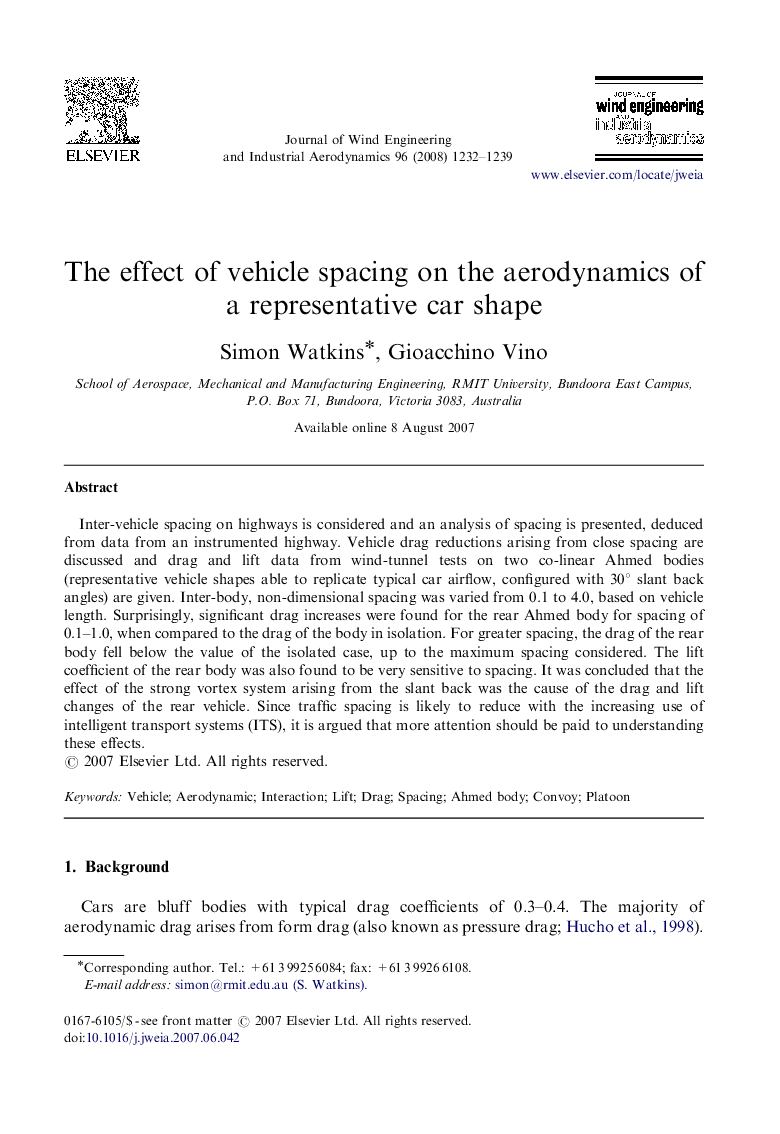| Article ID | Journal | Published Year | Pages | File Type |
|---|---|---|---|---|
| 293389 | Journal of Wind Engineering and Industrial Aerodynamics | 2008 | 8 Pages |
Inter-vehicle spacing on highways is considered and an analysis of spacing is presented, deduced from data from an instrumented highway. Vehicle drag reductions arising from close spacing are discussed and drag and lift data from wind-tunnel tests on two co-linear Ahmed bodies (representative vehicle shapes able to replicate typical car airflow, configured with 30° slant back angles) are given. Inter-body, non-dimensional spacing was varied from 0.1 to 4.0, based on vehicle length. Surprisingly, significant drag increases were found for the rear Ahmed body for spacing of 0.1–1.0, when compared to the drag of the body in isolation. For greater spacing, the drag of the rear body fell below the value of the isolated case, up to the maximum spacing considered. The lift coefficient of the rear body was also found to be very sensitive to spacing. It was concluded that the effect of the strong vortex system arising from the slant back was the cause of the drag and lift changes of the rear vehicle. Since traffic spacing is likely to reduce with the increasing use of intelligent transport systems (ITS), it is argued that more attention should be paid to understanding these effects.
